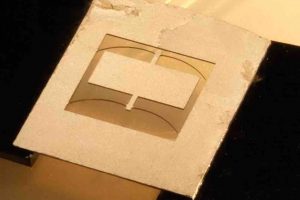The research – published by the Royal Society of Chemistry’s journal Lab on Chip – shows that cell patterning using a Heptagon Acoustic Tweezer may soon be in a position to deliver important results.
The University of Glasgow writes:
Dr Anne Bernassau, a Lord Kelvin Adam Smith Fellow in Sensor Systems (Electronic and Nanoscale Engineering), explained that using this sonic device, they were able to manipulate cells into complex assemblies – a “cell tartan”. In addition, the team were able to demonstrate that this cell tartan could aid neurone alignment, which is a preliminary step towards nerve repair. Dr Frank Gesellchen, a research associate in biomedical engineering, played a key role in the laboratory research.
Dr Mathis Riehle, a reader in the Institute of Molecular Cell and Systems Biology, said the researchers’ ambition was to turn what is currently a two-dimensional application into one that is three-dimensional.
At that point, he believes it would be possible to create an artificial device containing a person’s own cells that could be used to repair nerve damage more effectively than the current methods of nerve repair tubes or nerve grafts which do not have a high success rate.
The cross-university Sonotweezer team was supported by the EPSRC (Engineering and Physical Sciences Research Council).
Paper: DOI: 10.1039/C4LC00436A – Cell Patterning with a Heptagon Acoustic Tweezer – Application in Neurite Guidance [Lab on Chip, The Royal Society of Chemistry]
 Electronics Weekly Electronics Design & Components Tech News
Electronics Weekly Electronics Design & Components Tech News




